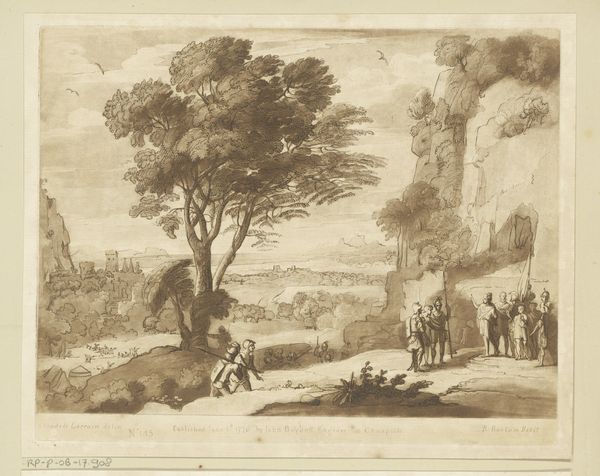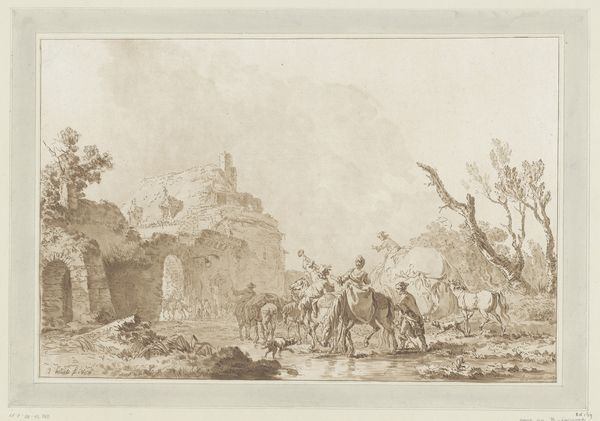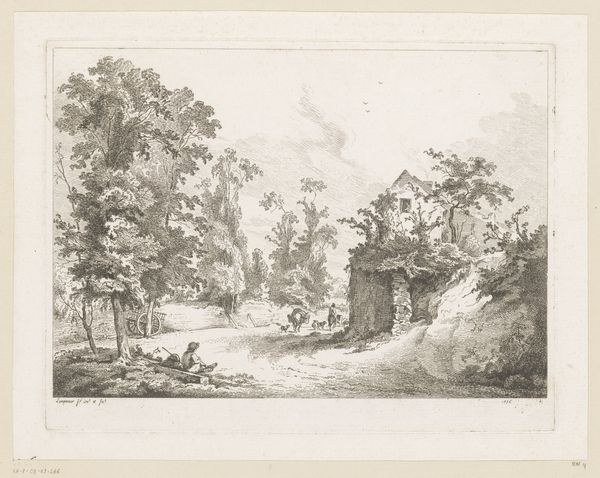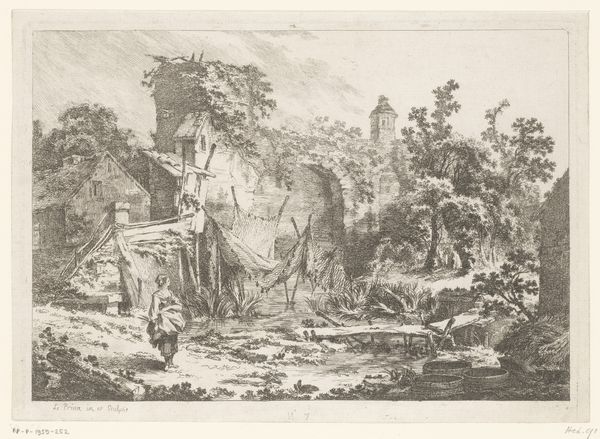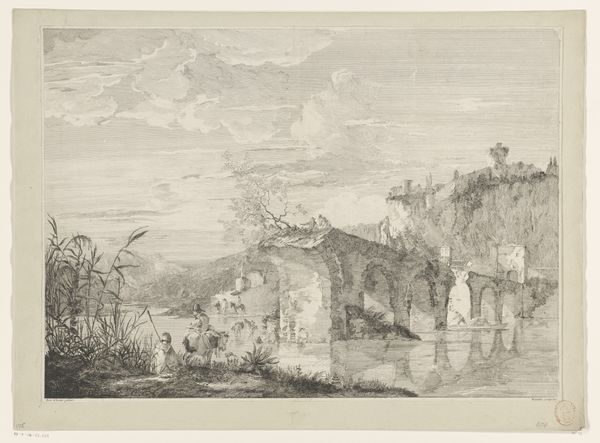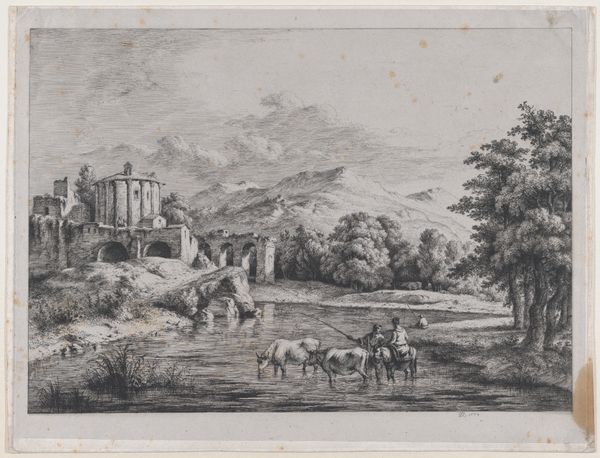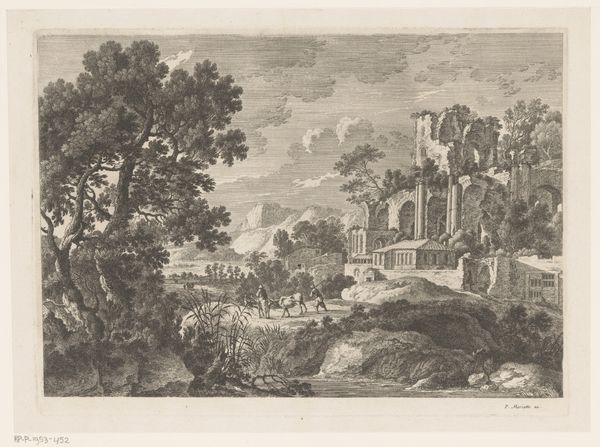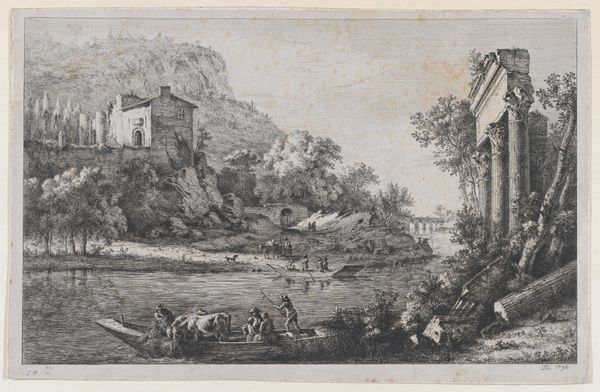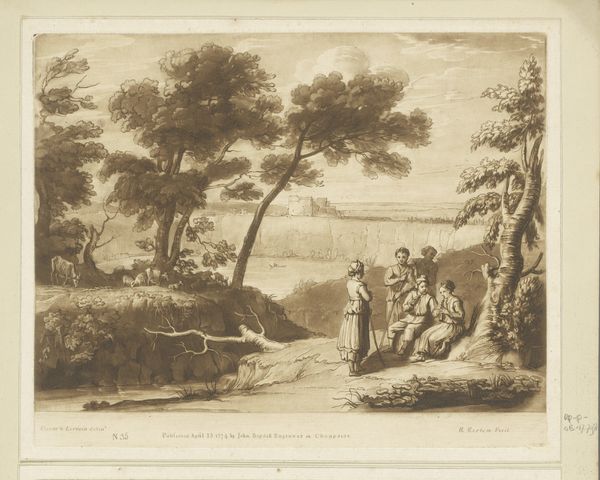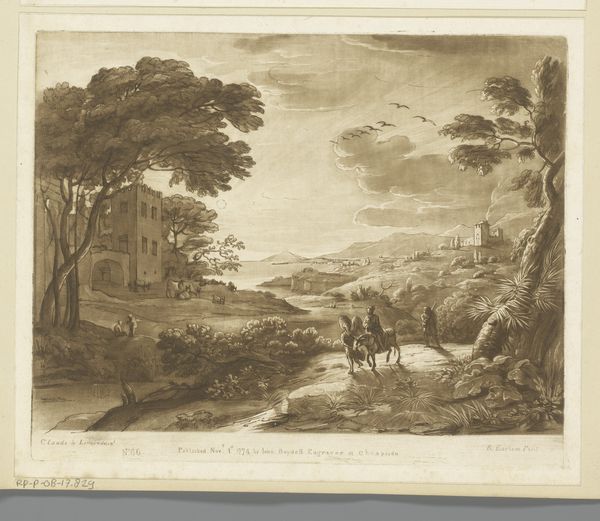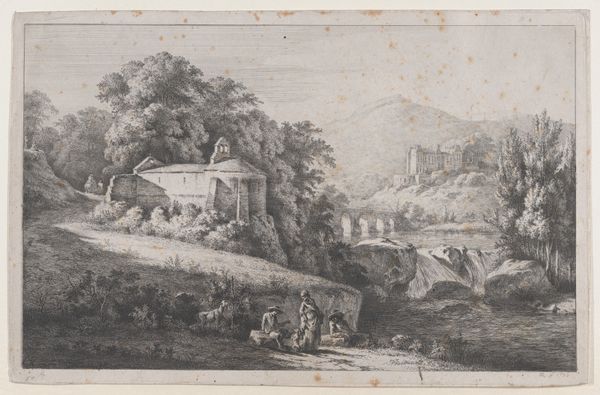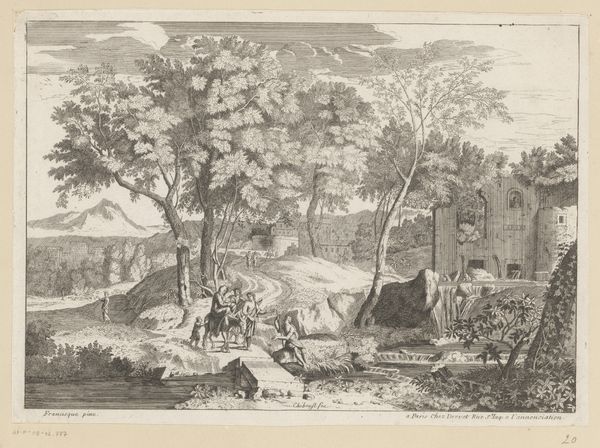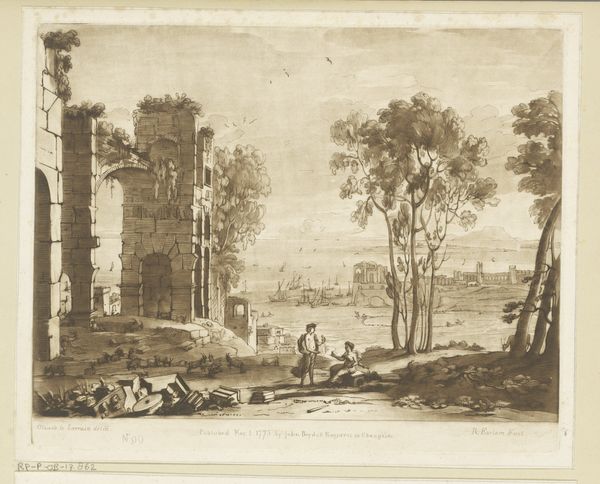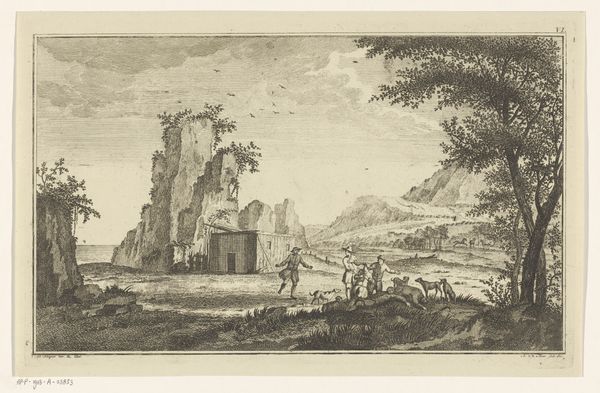
drawing, pencil, graphite, architecture
#
drawing
#
neoclassicism
#
landscape
#
figuration
#
romanticism
#
pencil
#
horse
#
men
#
graphite
#
history-painting
#
architecture
Dimensions: 9 1/8 x 13 1/8 in. (23.1 x 33.4 cm)
Copyright: Public Domain
Curator: Allow me to introduce this intriguing graphite and pencil drawing entitled "Landscape with Ruined Architecture," attributed to the School of Zuccarelli, and dating roughly from 1736 to 1870. Editor: Ruined is right. It's somber, isn't it? Like finding a forgotten kingdom on a cloudy afternoon. Curator: The artist skillfully juxtaposes the remnants of classical architecture with elements of nature, adhering to Neoclassical ideals even as hints of Romanticism creep into the picturesque composition. Note how the formal geometry of the archway interacts with the unruly vegetation. Editor: The people and the animals add a nice layer of humanity to it, too. That figure on horseback looks like he just wandered in from another story altogether. Like he and his retinue were taking a shortcut to, I don’t know, a Renaissance fair. Curator: Figurative elements serve here less as individuals and more as compositional tools, integrated purposefully into the larger vista. Their presence invites our eyes to follow them, guiding us toward further architectural ruins faintly visible on the horizon. Editor: Oh, I don't know. I think there's a little story being told. Are they lost? Contemplating their place in history? Is that dog friendly? It makes you want to fill in the gaps and makes this whole image more timeless. Curator: Indeed. These nuanced details lend a certain dynamism to what would otherwise function as a strictly academic study. And that’s a curious blending of history painting and pure landscape—a hybrid style. Editor: I keep coming back to that light. It's soft but it emphasizes how gigantic these structures used to be, like little ego boosts in the past. A pencil and some graphite can suggest so much, it is wild. Curator: The overall effect offers an insightful look into how past empires, however faded, continuously cast their shadows across human experience and memory. Editor: It is, in the end, not merely a depiction, but an evocation. Ruins stir more than just nostalgia: They are tangible reminders of how time flows and transforms, like this drawing, across centuries.
Comments
No comments
Be the first to comment and join the conversation on the ultimate creative platform.
